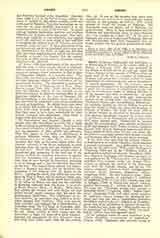

Amort, EUSEBIUS, philosopher and theologian, b. at Bibermuhle in Bavaria, November 15, 1692; d. at Polling, February 5, 1775. He was educated by the Jesuits at Munich and at an early age joined the Canons Regular in the convent of Polling, where he spent most of his life as a teacher of philosophy, theology, and canon law, a tireless student in many departments of ecclesiastical lore, and an investigator of natural phenomena. He was foremost among the German theologians of the eighteenth century as a guide and an inspirer of ecclesiastical youth, and may be considered a model of lifelong devotion to all the sciences that befit an ecclesiastic. As early as 1722 he founded, and with some interruptions carried on for several years, an influential review, “Parnassus Boicus, oder Neueroffneter Musenberg”. An academy formed by him at Polling became in time the model on which was based the Academy of Sciences of Munich. He spent the years 1733-35 at Rome, whence he returned to Bavaria enriched with precious knowledge acquired by intense study in the libraries of the Eternal City and by intercourse with many learned men. Thenceforth he counted among his correspondents such scholars as Benedict XIII and Benedict XIV, Father Concina, Cardinals Leccari, Galli, Orsi, St. Alphonsus Liguori, and others. For a period of forty years his pen was never idle, and from it unceasingly poured forth learned volumes and brochures filled with rare and choice learning.
It has been truly said that his seventy volumes, if distributed in an orderly collection, would resemble a general encyclopedia. As a philosopher, he is best known by his solid work “Philosophia Pollingana” (Augsburg, 1730) and by his “Wolfiana Judicia de philosophic et Leibnitiana physics” (Frankfort, 1736). As a dogmatic theologian and Christian apologist he won applause by his “Demonstratio critica religionis catholicie nova, modesta, facilis” etc. (Venice, 1744), written to promote the reunion of the Protestant sects with the Catholic Church, and by his “De origine, progressu, valore et fructu indulgentiarum accurata notitia historica, dogmatica, critica” (Augsburg, 1735). His most extensive work, “Theologia eclectica, moralis et scholastica”, published at Augsburg (1752) in four folio volumes, and later at Bologna (1753) in twenty-four octavo volumes, merited the honor of a revision by Benedict XIV. He wrote also “Theologia moralis inter rigorem et laxitatem media” (Augsburg, 1239), “Ethica Christiana” (Augsburg, 1758), and other moral treatises. St. Alphonsus Liguori admired his theological prudence, and Gury calls him a “probabilista moderatus doctrina et sapientia clarus”; others (e.g. Toussaint) accuse him of an inclination to rigorism in practice. He translated into Latin the “Dictionnaire des cas de conscience” of Pontas (Venice, 1733), but modified its Gallican tone and rigoristic views.
Of his canonical works the most important is his “Vetus Disciplina canonicorum et regularium” (Venice, 1748), “Elementa juris canonici veteris et moderni” (Ulm, 1757), both valuable for their wealth of historical material. In the latter he defends ecclesiastical jurisdiction against the attacks of contemporary jurists and statesmen. The best known of his works is entitled “De revelationibus, visionibus et apparitionibus privatis regulae tut e ex Scripture, Conciliis, Sanctis Patribus aliisque optimis auctoribus collect, explicatae atque exemplis illustrat” (Augsburg, 1744). It was directed against the “Mystic City of God“, the famous work of the Spanish Franciscan nun, Maria de Agreda, and brought him into conflict with several of her Franciscan defenders. This learned scholar found time to prepare for the people a number of devotional works. His prayerbooks, “Kurz and Gut” and “Brevier eines guten Christen”, went through many editions. He also compiled select lives of the saints and wrote a German treatise (Venice, 1756) on the invocation of the saints, besides a smaller and a larger catechism. In the discussions waged during the first half of the eighteenth century concerning the authorship of the “De Imitatione Christi” Amort stood forth as an ardent supporter of the claims of Thomas a Kempis, though his seven works on the subject, praised for their “rare learning and judicious temper”, failed to silence the Benedictine champions of Jean Gersen. The more important are: “Scutum Kempense” (Cologne, 1725); “Plena et succincta informatio de statu totius controversiae” (Augsburg, 1725), and “Certitudo moralis pro Th. Kempensi” (Ratisbon, 1764). On his portrait by Jungwirth was engraved “Litteraruin maxime sacrarum per Bavariam restaurator eximius”. The visitor to Bibermiihle may now contemplate a marble monument erected in honor of a theologian in whom industry, erudition, critical skill, and piety were united in a high degree.
THOMAS J. SHAHAN

